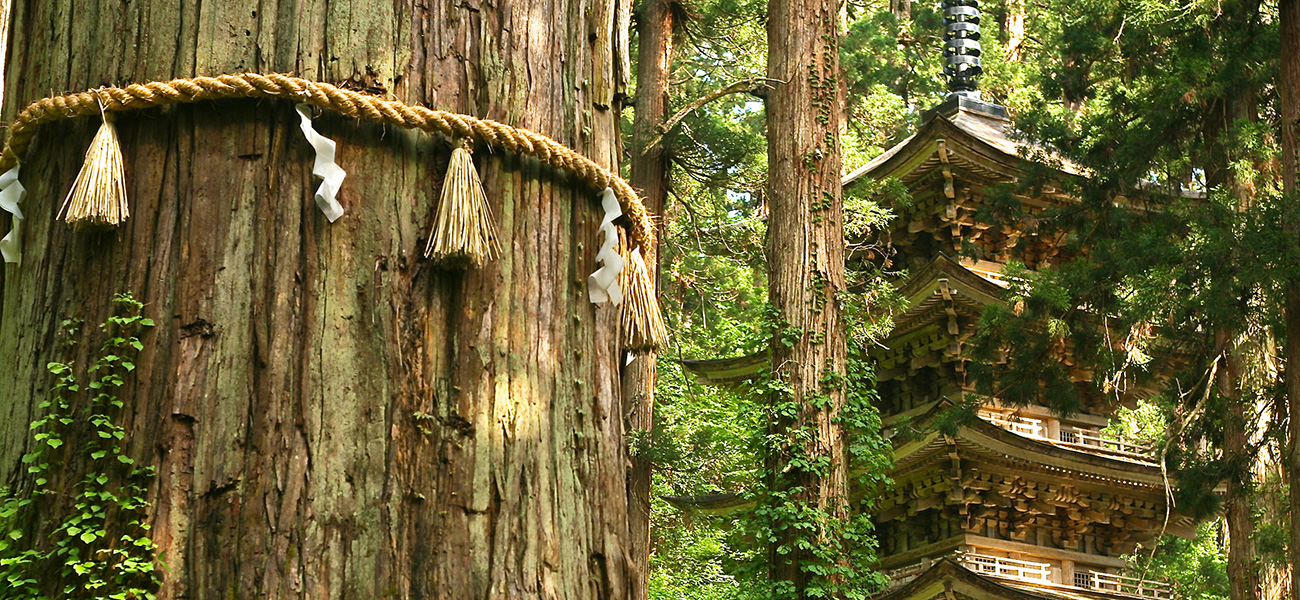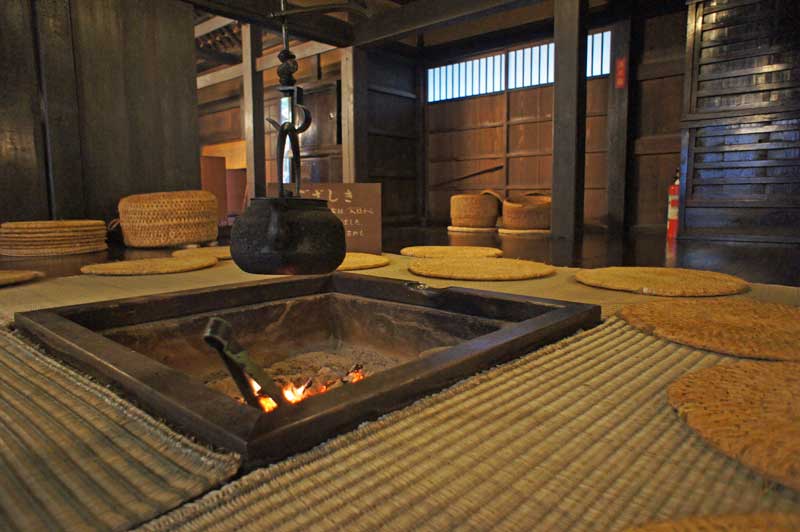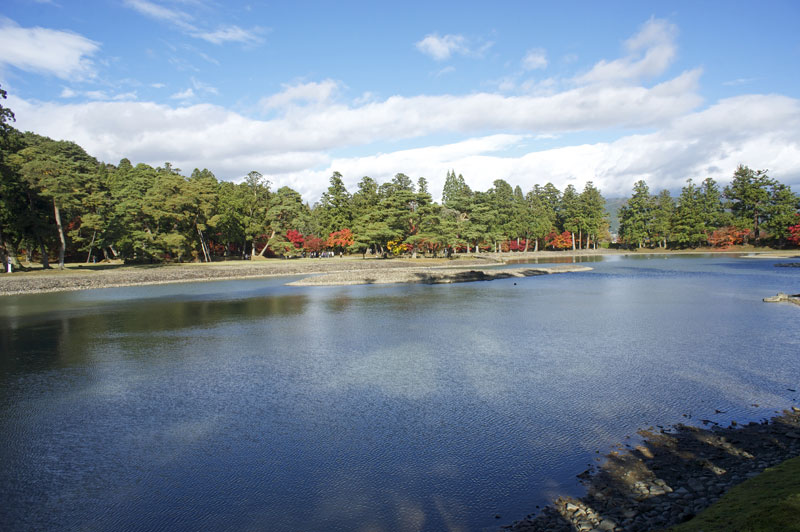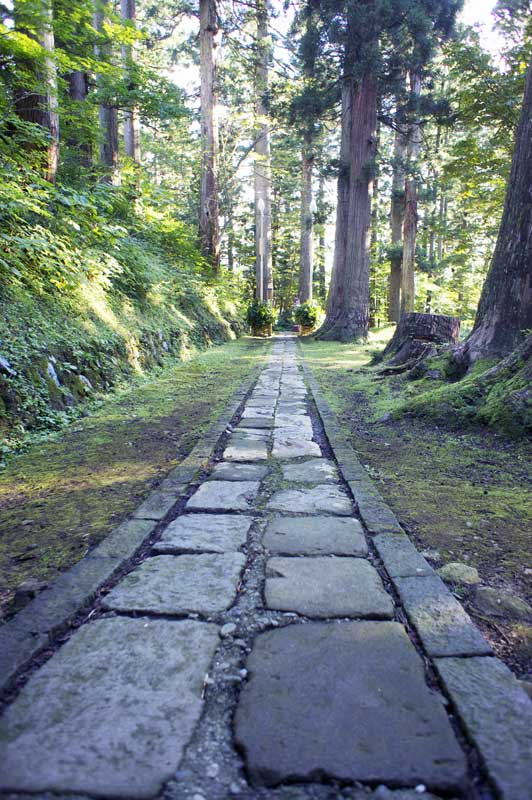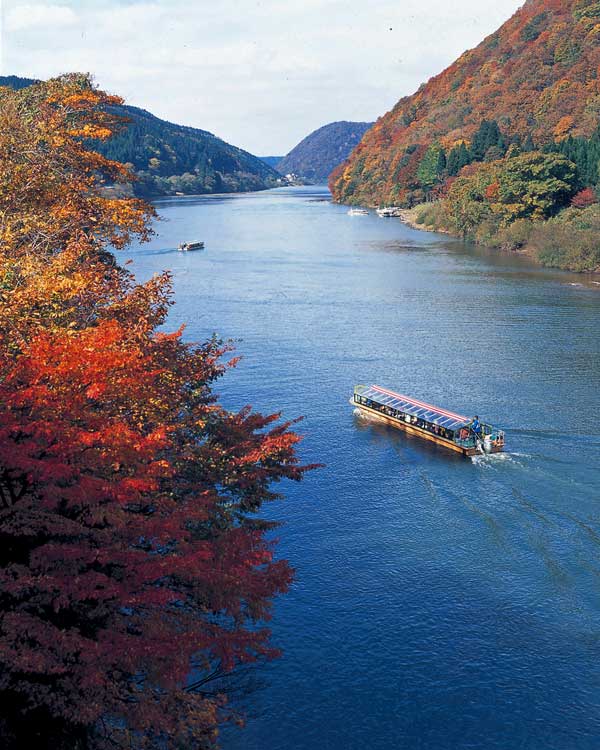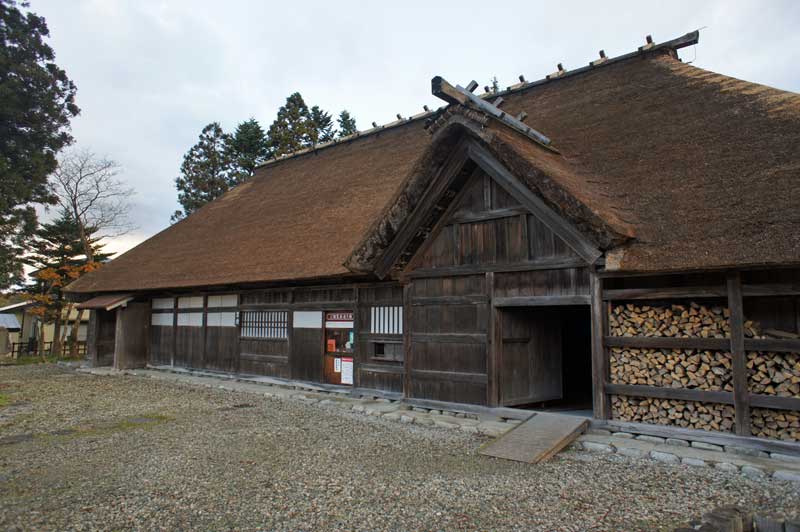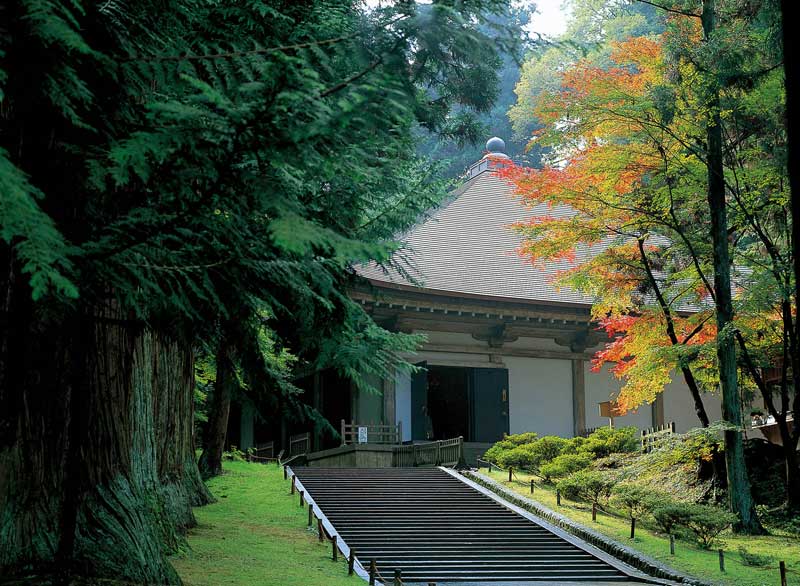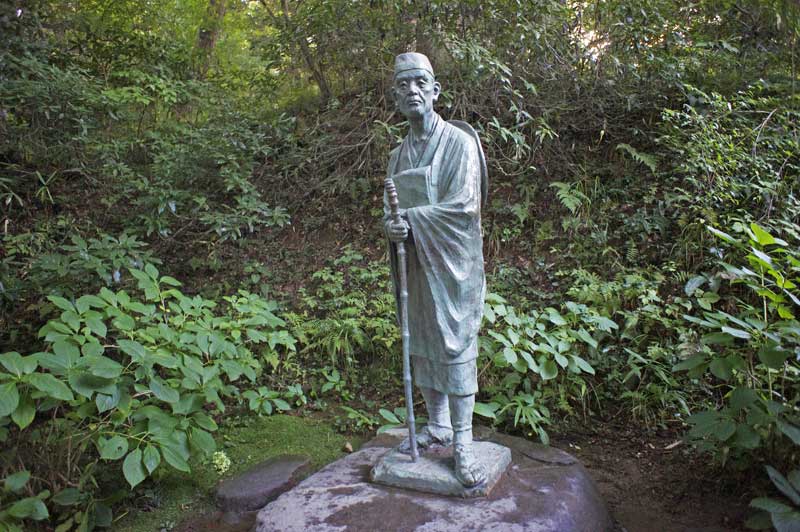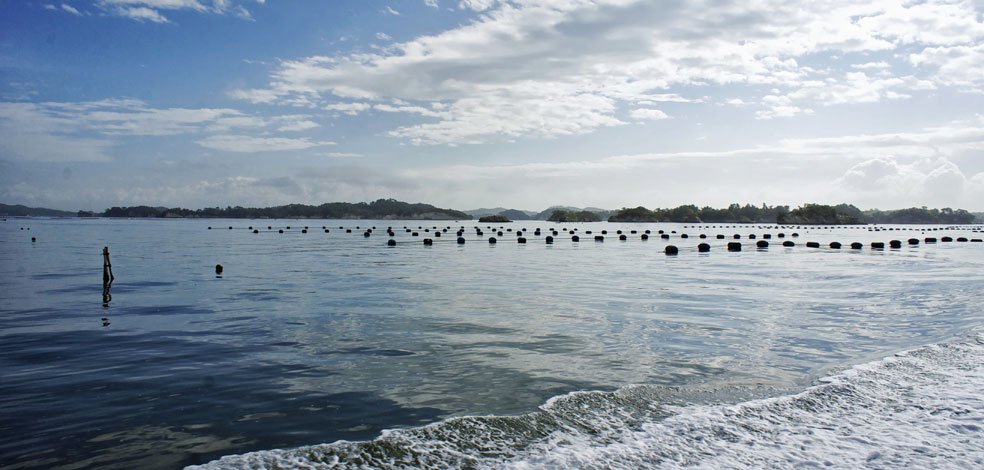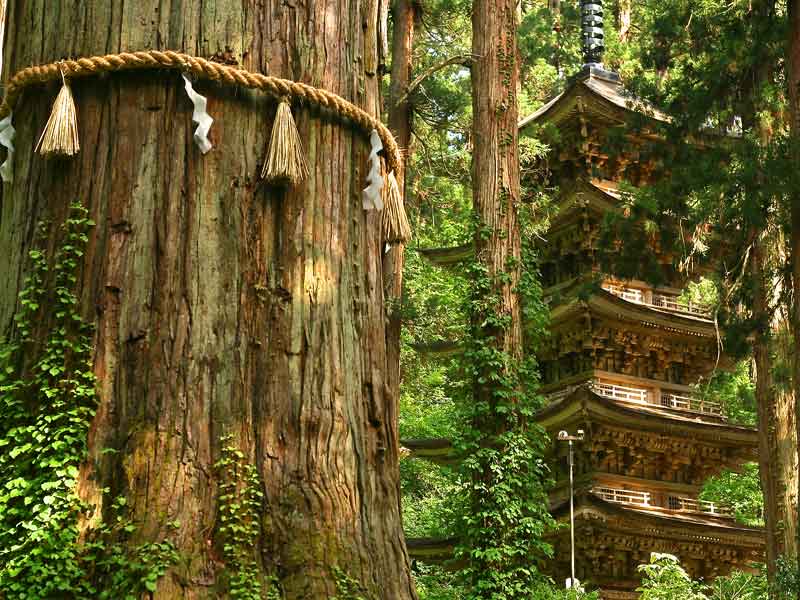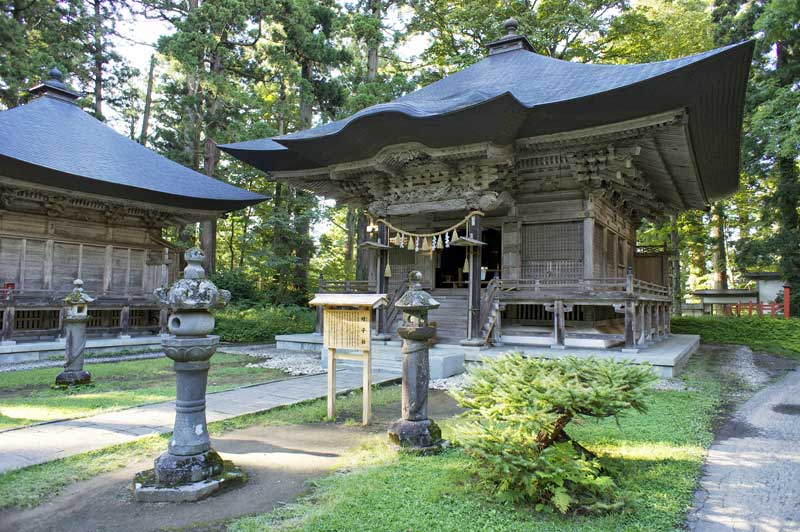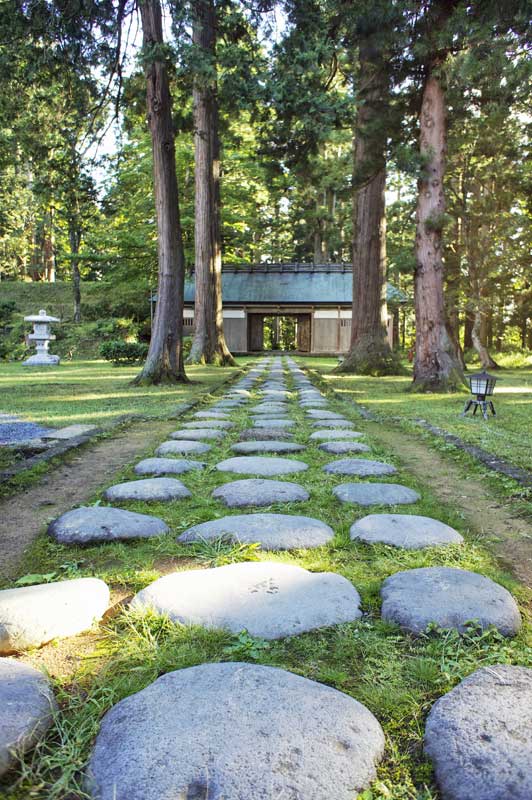A walk through beautiful Tohoku in northern Japan.
Guided, moderate walking following in the footsteps of Japan’s greatest poet, Matsuo Basho. Includes the pine-clad islands of Matsushima Bay, spectacular Japanese gardens at Hiraizumi, and the sacred mountains of Dewa. Accommodation in traditional inns, modern hotels, and a Shinto shrine, with Japanese cuisine and onsen thermal hot spring baths.
May - November.
A 7-day, 6-night tour starting in Sendai and finishing in Yamagata. Tour accommodation is in hotels, Japanese inns and Shinto shrine lodgings. Please read more on accommodation here. The maximum group size for this tour is 12 persons. We have no minimum size. If we accept a booking we guarantee to run the tour.
Basho's most famous poetic travelogue, Narrow Road to the North, is one of the great works of Japanese literature. This 7-day, 6-night fully-guided tour takes us on a unique, authentic experience following in the footsteps of seventeenth-century Japanese poet, Matsuo Basho (1644–1694). The walking is along quiet country lanes, forest trails and mountain footpaths; all easily enjoyed by regular walkers. Like Basho, we take delight and inspiration from some of the greatest scenery to be found in Japan including Matsushima, one of the classic Three Views of Japan, and the sacred mountains of Dewa Sanzan.
Besides the beauty of the countryside we travel through and the haiku poetry of Basho, we also learn of the tumultuous history that wreaked destruction but also nurtured the tough spirit and culture of the people of Japan’s northerly regions. The Basho Tour also features visits to onsen thermal hot spring resorts, stays in Japanese inns and sumptuous Japanese cuisine.
We meet in Sendai and travel through Matsushima, Hiraizumi and the Dewa Sanzan before finishing our journey in Yamagata. Walk Japan provides detailed instructions on how to reach the tour accommodation on Day 1.

Please note that travel by train from Yamagata to Narita Airport takes approximately 4 hours and to Haneda Airport approximately 3.5 hours.
For logistical reasons, we will be sending our main luggage ahead overnight on one occasion; from Matsushima on Day 3 to arrive at Akakura Onsen on Day 4. On one night, in Hiraizumi on Day 3, we will be without our main luggage.
Day 1 Sendai
Meet in Sendai in the lobby of our accommodation at 6:00pm for the tour briefing, which continues over dinner with your tour leader in a local restaurant. With a population of one million, Sendai is the largest city in the Tohoku region. When Basho visited, it was a much smaller settlement, but expanding quickly as a hub of culture and commerce in the North due to the efforts of the ruling Date (pronounced dar-tay) clan.
Accommodation: Western-style hotel.
Meals: Dinner provided.
Total walking: N/A.
Total elevation gain: N/A.
Day 2 Sendai – Matsushima
Following breakfast at our hotel, we board a local train for a short journey to Kokufu Taga-jo, which was once a frontier fortified town in the Nara Period (710-794) built atop a low hill. We follow an easy path to the summit, where we find an ancient stone stele that moved Matsuo Basho (1644-1694) to tears. From here we follow in the poet’s footsteps along a path to Shiogama.
At Shiogama we board a boat that wends its way along the spectacular coastal route Basho also took through Matsushima Bay, which is dotted with a multitude of pine tree-covered islands. Basho relates that he had longed to visit here and with good reason; it provides one of Japan’s classically beautiful vistas. However, Basho overcome by Matsushima’s beauty, was lost for words and never put pen to paper here.
Our accommodation for the night has relaxing onsen thermal hot spring baths and dinner is a gourmet feast of Japanese cuisine.
Accommodation: Japanese-style hotel with onsen hot spring baths.
Meals: Breakfast, lunch & dinner provided.
Total walking: 8km (5 miles).
Total elevation gain: 100m (328ft).
Day 3 Matsushima – Hiraizumi
Following breakfast, we walk to Zuigan-ji temple, where caves, carved into a rock face, once accommodated monks in ascetic retreat. We move on to the nearby Entsu-in, famed for its beautiful gardens that include a heart-shaped pond.
We depart by vehicle mid-morning for Hiraizumi, another UNESCO World Heritage site. During the reign оf the Fujiwara Clan (866–1184), Hiraizumi wаs said tо rival Kyoto іn grandeur and sophistication. Today, the only significant reminders of this past glory аre the temples оf Chuson-ji and Motsu-ji.
After lunch we make our way to Motsu-ji temple among the foundation stones of the many buildings that graced this once-grand temple. However, the elegant garden representing the Pure Land Buddhist paradise has been restored to its twelfth-century splendour. Next we follow a delightful walking trail to Chuson-ji. The temple’s Konjiki-do, or Golden Hall, has been reconstructed and is probably the most elaborately decorated Buddhist structure in Japan. While walking, we learn about the decline of the Fujiwaras, the demise of Hiraizumi as a cultural and religious centre and Japan’s Warring States Period (approx. 1450–1600). Here, Basho composed his reflection on impermanence:
Summer grass,
All that remains of a warriors dreams.
Another feast tonight in our modern Japanese-style accommodation, again with onsen baths.
Accommodation: Japanese-style hotel with onsen hot spring baths.
Meals: Breakfast, lunch & dinner provided.
Total walking: 12km (7.4 miles).
Total elevation gain: 366m (1,200ft).
Day 4 Hiraizumi – Akakura Onsen
An early start for train transfers, including a short and very rapid shinkansen bullet train journey, to Naruko Onsen. Here we walk from the site of Shitomae-no-Seki, an Edo Period (1603–1868) checkpoint, along a well-maintained trail linking valleys and crossing forest streams on the old Dewa Kaido highway, to what was the home of a senior local official. Basho stayed here on his travels, which from the poetry associated with his visit does not sound so glamorous:
Fleas and lice, horses urinating,
Close by my pillow.
Unlike Basho’s slumbers, our evening accommodation is a very comfortable traditional Japanese inn with onsen baths.
Accommodation: Traditional Japanese inn with onsen hot spring baths.
Meals: Breakfast, lunch & dinner provided.
Total walking: 12.1km (7.5 miles).
Total elevation gain: 404m (1,325ft).
Day 5 Akakura Onsen – Mt. Haguro
After breakfast we walk over the remote Natagiri Pass, once notorious for its difficult terrain and banditry. Basho thought he would not survive his travels and never more so than on this day. Today, although starting off with a short steep climb, the path is generally an easy undertaking and any chance encounters always friendly.
After descending we transfer by taxi to the Mogami-gawa river. Like Basho, here we board a small boat to navigate down this still-mighty waterway.
Gathering early summer rains,
How swiftly it flows, Mogami-gawa.
On to Mt. Haguro-san, a sacred mountain, which we ascend to our accommodation up a long series of stone steps through this spectacular Shinto shrine complex. The surrounding area is known as the Dewa-sanzan, Three Mountains of Dewa – Mt. Gassan, Mt. Yudono-san, and Mt Haguro-san – and is one of the most important centres in Japan of Shugendo, a Shinto-Buddhist ascetic and mystical practice. Like many travellers of his day, Basho was a pilgrim of sorts and often relied on the hospitality of locals. The tradition of pilgrimage along the great highway systems of Japan became important in the Edo Period, and we spend the night in similar fashion to Basho; enjoying a simple but delicious shojin-ryori vegetarian temple cuisine dinner and sleeping in unembellished Japanese-style accommodation.
Accommodation: Shukubo pilgrim lodging.
Meals: Breakfast, lunch & dinner provided.
Total walking: 7km, (4.3 miles).
Total elevation gain: 367m (1,204ft).
Day 6 Mt. Haguro – Shizu Onsen
For those who wish to attend, morning Shinto prayers are held in the main shrine room before breakfast. The morning prayers are an unusual experience for both Japanese and overseas visitors alike. After our simple vegetarian breakfast, a dedicated vehicle remains with us today as we explore the Rokujuri-Goe Kaido, an ancient trail connecting inland Yamagata with the coastal Shonai plain.
Before setting off on our walk today, we first visit a temple that is locally famed for shugendo, a strict mountain aesthetic practice for achieving enlightenment. The priest provides us with an entertaining and inspiring introduction to his life.
Our path, which Basho also followed, takes us over undulating ground through a spectacular beech forest. En route, we pass many monuments related to a local religious worship and, weather permitting, we enjoy wonderful views of Mt. Gassan. Rejoining our vehicle, we transfer to our evening accommodation at Shizu Onsen. Here hot spring baths and delicious local cuisine await us for our final night together on tour.
Please note that the duration and destination of our walk on this day may depend on weather conditions for early and late season tours.
Accommodation: Modern Japanese inn with onsen hot spring baths.
Meals: Breakfast, lunch & dinner provided.
Total walking: 12km (7.5 miles).
Total elevation gain: 556m (1,824ft).
Day 7 Shizu Onsen – Yamagata
We transfer together from the accommodation to Yamagata station after breakfast, where we arrive in the late morning. The tour ends here, with onward travel by shinkansen bullet train easily accomplished. Your Walk Japan tour leader will assist in the purchase of your tickets and make sure you know what to do to complete your journey smoothly.
Accommodation: N/A.
Meals: Breakfast provided.
Total walking: N/A.
Total elevation gain: N/A.
This itinerary is subject to change.
The airport closest to the tour start point is Sendai International Airport. The journey is also easily made from both Tokyo’s Narita and Haneda International Airports.
-----
FROM SENDAI INTERNATIONAL AIRPORT (SDJ)
Sendai Airport Access trains depart every 20~30 minutes for Sendai Station, where the trains terminate. It is a short walk or taxi ride from here to your hotel in the centre of town.
-----
FROM TOKYO’S HANEDA AIRPORT (HND)
Tokyo Monorail trains depart for and terminate at Hamamatsu Station. Transfer here to the trains on either the JR Yamanote or JR Keihin-Tohoku Lines for Tokyo Station. To Sendai from Tokyo Station please see the section below.
-----
FROM TOKYO’S NARITA AIRPORT (NRT)
JR Narita Express (NEX) trains depart every 30 minutes for Tokyo Station. To Sendai from Tokyo Station please see the section below.
-----
FROM TOKYO STATION
The journey to Sendai is made on the JR Tohoku-Hokkaido Shinkansen, one of the super-fast bullet train lines. Departures are every 20~30 minutes and the journey is either 90 minutes or 2 hours, depending on the train taken. It is a short walk or taxi ride from here to your hotel in the centre of town.
The pre-tour pack includes detailed instructions, including a map, for travel to the accommodation at the start of the tour.
Please note that travel by train from Yamagata station to Narita Airport via Tokyo station takes approximately 4 hours and to Haneda Airport approximately 3.5 hours. Yamagata airport is much closer, but has limited flights - please contact us for more information.

